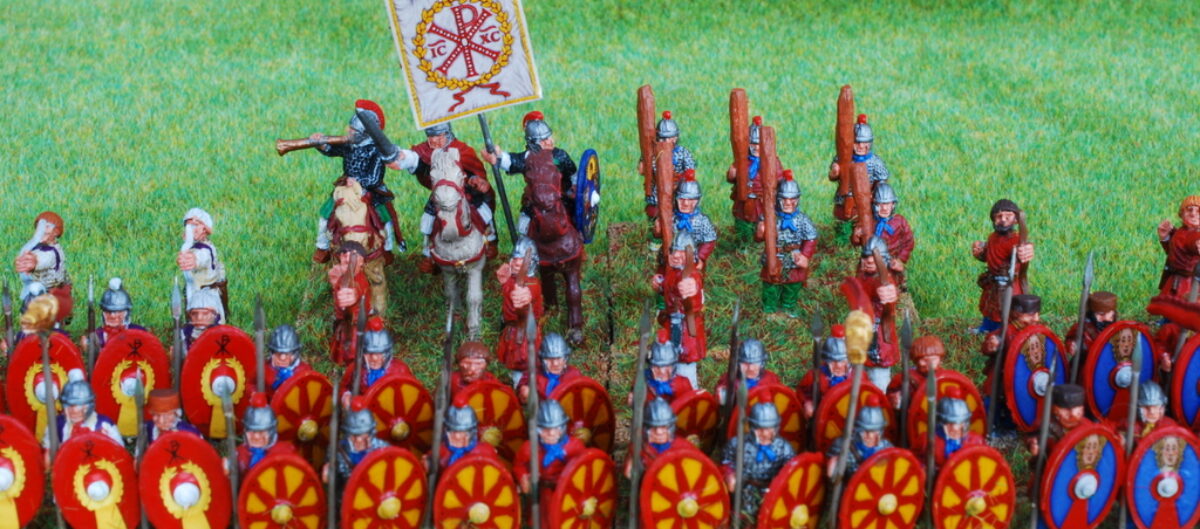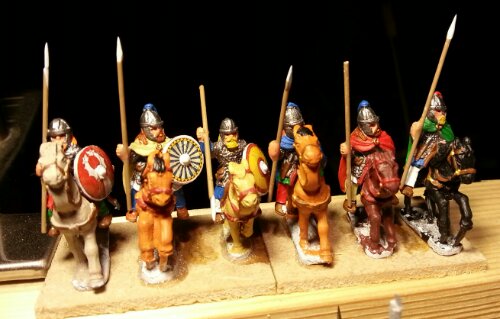This year’s battle for the Society of Ancients Battle Day is the Battle of the Catalunian Fields, aka the Battle of Chalons, in 453AD. It is regarded as a pivotal battle of late antiquity, stopping Attila’s Huns in their tracks and saving western Europe from them, although actually it doesn’t seem to have really had such an effect, and western Europe was saved more by his marital over-exertion and the inability of his successors to control their German vassals.
Anyway, next post will deal with the two armies. This one will be about where it was fought. It is one of those battles where we just have a few fragmentary accounts of what is going on, all of which seem rather unreliable. The primary source is Jordanes, a Romanized Goth writing in the 6th century. The consensus seems to be that Attila, on a up-til-then successful plundering expedition through Gaul, was besieging Orleans. Aetius, the Magister Militum of the West, came north from Ravenna, assumed command of the relic field army of Gaul and forged an alliance between the various Germanic tribes that had carved up most of Gaul between them by this stage, and who therefore actually had more to lose to Attila than Aetius did.
This combined army then moved on Orleans, forcing Attila to raise the siege. Attila then appears to start retreating back towards the Rhine, presumably happy with the plunder gathered so far and unwilling to risk his men in an unnecessary battle. At some point along this line of retreat, Aetius catches him and forces him to give battle. We are told that the site of the battle is somewhere near Chalons, and the only two physical details we are given about the battle are that there is an important ridge that is fought over at the beginning of the battle, and that after the battle the streams ran red with blood. Given that these streams are not mentioned during the battle, they cannot be one of the major rivers that cross the area though.
Most authorities place the site of the battle on the open plain between Troyes (on the Seine) and Chalons (on the Marne). Retreating from Orleans (on the Loire) to the Rhine involves crossing both of these rivers at some point. I think we can probably also assume that Attila, probably encumbered by considerable baggage, used the Roman road network to move his army around. The obvious initial route is Orleans-Sens-Troyes. At this point you reach the Seine which is the first significant obstacle and which is going to slow down your army as you cross it, probably by a single bridge. If Aetius is hard behind Attila then this is the first place that he can catch up, and Attila might end up in the awkward position of being caught with half his army on the far side of the river and out of action.
This line of enquiry was sparked by an article that Duncan found in an old French journal that outlined a possible battlefield to the west of Troyes. The road from Sens passes through a range of hills before debouching onto a plain in front of Troyes. On the north side of the plain, there is a prominent ridge, with the village of Montgueux on top of it. This seems to be a prime candidate for Jordanes’ ridge. There is also a small stream that appears to rise in the plain, near the modern village of Torvilliers, which would be the stream of blood. A snapshot of the battlefield from Google maps, annotated by me, is shown below, with the potential site for the battle that we have decided to use.


